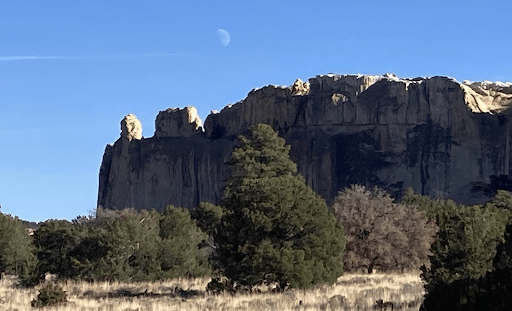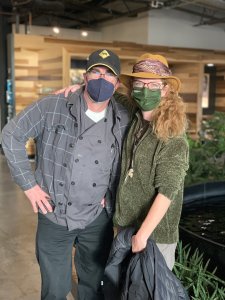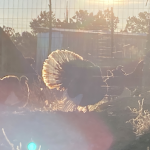Forward Cities Senior Director of Learning Networks Brett Brenton takes us along on his unique journey with ESHIP Rio Grande's places and people, sharing a behind-the-scenes view of this vital ecosystem building that is evolving in New Mexico.
The ultimate goal of ecosystem building is to create an environment where every entrepreneur, starter, or small business owner can reach their full potential. Through the work of ESHIP Communities, our goal is to build a suite of tools, resources, and lessons learned that can inform the practice of ecosystem building at scale. We ultimately want any person affiliated with ecosystem building to be able to access knowledge and understanding of what’s been tried before so that they can learn from it and potentially customize it for their own ecosystem.
This is a practice that has taken place in person traditionally. Like so many other elements of life, it has been forced into a virtual space for the better part of the last two years. People who were used to convening on a day to day or weekly basis in person have had to pivot to a different form of connectivity. This has taken its toll, especially in a place like New Mexico, where even though the geographic gaps are great, the people have a strong bond and sense of collective community. The ESHIP Rio Grande engagement in North Central New Mexico offers us an opportunity to consider the wider boundaries it can encompass. Instead of the more “traditional” main street, high tech, or microenterprise players, ESHIP Rio Grande focuses on the growers and ranchers that speckle the varied landscape across this vast and beautiful region. In doing so, we enter a space of rural ecosystem exploration, at least from the Forward Cities perspective, that hasn’t been explored before.

Moonrise over El Morro National Monument
The initiative—which launched just over two years ago and will conclude at the end of June 2022 — has included a food asset survey, produced multiple pieces in consecutive fall issues of the Green Fire Times, held an event centered on reimagining the New Mexico food economy, and created a statewide innovation council that has helped bolster an agricultural ecosystem grounded in the interests of farmers and ranchers while creating equitable access to fresh healthy food throughout the state. The work is now centered on getting growers to be food safety certified and, more ambitiously, to create a network of navigators who can perform intake and referral to growers in need of any one of a host of services that are being offered across the state to improve things like strategy and access to market.
This made for an ideal time for me to pay a visit to the Land of Enchantment. As the Senior Director of Learning Networks, I support our Local Directors for our ESHIP Communities initiative including Erin Ortigoza in New Mexico. Because of COVID, I had not had an opportunity to visit and see the work in action, and I was excited to get a better understand the challenges and opportunities that Erin had been describing for the past many months.

Erin Ortigoza and David Sundberg
I connected with Erin and council member David Sundberg for a tour of the state that covered over 700 miles in four days. During that time we connected with entrepreneurial support organizations struggling to excel financially, had an opportunity to lead a training for a group of forty ecosystem supporters from across the state, and had an incredible visit to the Covenant Pathways Spirit Farm for a rich conversation with leaders from the Pueblo of Zuni and Navajo Nation.
The common thread for our ESHIP Rio Grande work right now is in the development of pilot programs we’ve cultivated for the better part of the year. One of the greatest inhibitors to success for growers is access to markets. New Mexico is a state with a heavy agricultural focus, exporting over 90% of its crops and importing food for its people at a similar rate. In order to create a system where more food that is grown in New Mexico stays in New Mexico, more local growers need to find expanded opportunities to circulate their food within the state through institutional procurement avenues (such as schools and senior centers), local food hubs, value added production, community supported agriculture (CSAs), and farmers markets. The programs the ESHIP Rio Grande council members and staff collectively designed aim to do just that.

Sunrise near the Sevilleta Wildlife Refuge
The Food Community Navigator project will connect knowledgeable guides called navigators with food producers in two distinct regions of the state. They can then be referred to service providers who will assist them with the resources they require. While it’s hard to say exactly what those may be, we’re lining up providers who can support things like marketing and branding, business strategy, accounting and legal, and more field-specific support services like soil building, water conservation, and food safety. The idea is to test the demand and effectiveness of this intervention with a small group of twenty growers representing the indigenous populations in western New Mexico as well as some of the under-connected growers in the North Central Rio Grande valley. Should it prove successful, we’ll look to scale and sustain the program through local means and capacity.

A turkey spreads its feathers to capture the first rays of the day on the Covenant Pathways Spirit Farm
Of special note was the visit to the aforementioned Covenant Pathways farm. James and Joyce Skeet hosted a gathering of community members from within and around the Navajo and Zuni lands for a relationship building and informational session that gave us a chance to learn about all the efforts being made to support indigenous populations and share the program details. It was an enlightening meeting. We did a round of intros that lasted nearly two hours and was as rich as any conversation I’ve had in some time. There are practices emerging in these lands that put a much greater focus on food and livestock quality and ensuring that open lines of trade exist for something that James refers to as ‘Rezonomics’. The promise is tremendous, especially when considering the current reliance on commoditized food and import/export challenge raised earlier.
While the work of identifying hubs and lining up growers for scholarships takes place, work is being done through a larger community of practice across the state that will keep this and other issues in mind as they develop a path forward. Thanks to the Regional Food System Partnership (RFSP) USDA grant, a group of about 40 food and agricultural ecosystem leaders have been meeting virtually for the last year to develop this focus and determine better practices along food safety, quality, access, food hub capacity, and the New Mexico Grown program. They met in person for the first time at the Sevilleta Field Station, where we guided them through a Strategic Doing workshop. This gave the four working groups a chance to develop and hone a specific strategy that would guide them in the weeks and months to come.

Erin Ortigoza, ESHIP Rio Grande Local Director
The gathering was a wonderful reminder of what it looks like when dedicated and aligned stakeholders come together to advocate for the needs of many in such an intimate way. Meals were prepared by attendees on site, housing was fairly communal (simple buildings with a shared kitchen and multiple dual occupancy bedrooms), and relationships that had been mostly virtual for the last year and a half sprung back to life. It was a wonderful thing to witness, as were all the parts of New Mexico we got to visit on the brief journey.
We enter 2022 with a lot of momentum and some visible signs of need from the folks that have been engaged in the project thus far. What served as a timely visit to finish the year has set the stage for tremendous opportunity, both for the people who engage and the promise of this type of initiative scaling up to other parts of the state. Each deserves special attention as we test and learn in the months to come.
